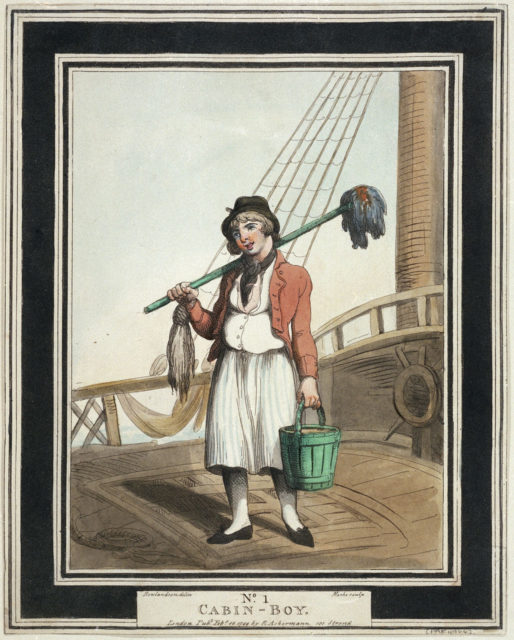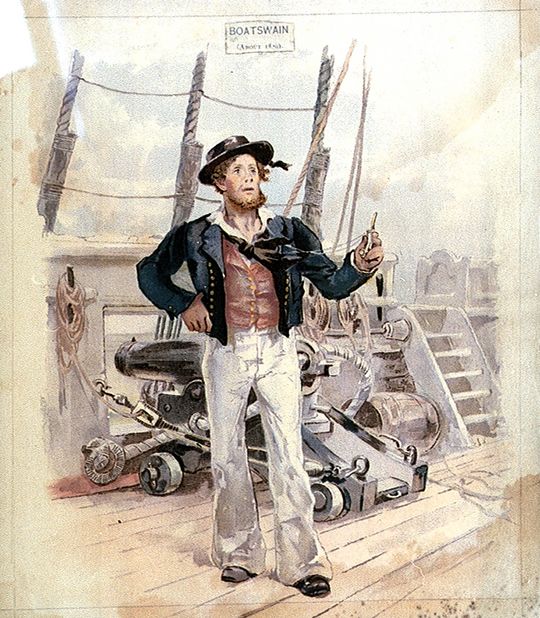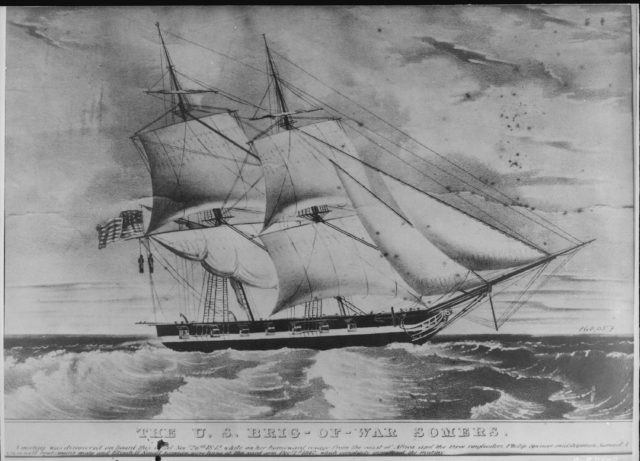By the end of the 18th century, the wooden walls of England, as her Navy was so often called, was comprised of one of the largest fleets of ships ever amassed.
These ships needed a strong, willing, and dedicated crew to man them. This meant discipline and lots of it.
Each ship operated as a semi-independent city, with internal hierarchies, justice, and responsibilities. When a sailor broke one of the laws aboard, his punishment was often swift, brutal, and sometimes even fatal.
The simplest reprimands were often denying privileges and rations. Physical punishments were also very common.
Here are three of the most common corporal punishments dished out by 18th and 19th century Royal Navy Law.
Caning:
Tthe least severe of all, it was usually reserved for boys and Midshipmen. At the time, ship’s boys could range in age from 12-18 years old. They were servants and assisted the older sailors, bringing them food.
They even worked as a “powder monkey”, running gunpowder from the magazine up to their cannon during combat.
Midshipmen, on the other hand, were the most junior officers, tasked with learning the trades of the sailors, as well as leadership and the sciences of navigation, gunnery, and tactics.

Usually, they would bend over a cannon, or whatever was closest at hand. They would be whipped with a rattan cane, essentially a thin but stiff piece of reed.
The maximum sentence was 12 strokes, enough to hurt for about two weeks. This could be prescribed either as an immediate punishment, for misbehaving in a minor way or come after a more formal hearing, for more troubling cases.

Caning certainly was not a pleasant experience, but it was not the worst the Navy had to offer.
Once they reached 18, more severe punishments could be administered, as after that they would be treated as adults.
Caning has never been officially outlawed but decreased in practice during the 20th century.

Flogging:
Flogging was by far the most common of the three. While flogging was essentially just whipping the offending individual, in the Navy it took on its own traditions and variations
Flogging by the gangway was used for nearly all noncapital offenses. A grating would be rigged upright, and the sailor would have his shirt removed.
He would then have his wrists lashed to the grate, and the Boatswain would proceed to whip him with a Cat O’ Nine Tails. This was a whip made out of 9 strands, with small knots on the end.

This was done in front of the whole crew, following a formal hearing where the sailor could speak up in his defense. It could be used for anything from drunkenness to desertion and was often used preemptively.
Captains would issue a slew of floggings just after leaving port, to encourage the men to behave for the rest of the voyage.
There was also running the gauntlet, usually sentenced for theft from a shipmate. The sailor would have to walk slowly through two lines of his shipmates, who would whip him with small multi-tailed whips.
This allowed the crew to show their solidarity against theft and effectively ostracized the offending individual. Often it was worse than the physical pain when in the tight-knit crew of a sailing ship.
Finally, there was flogging around the fleet, for the most severe offenses which did not warrant death. A sailor would be brought into port, and flogged on every Royal Navy ship present.
This was often fatal, and sailors could have been whipped dozens of times by the end of it.
Finally outlawed in 1806, flogging as a general practice, though, was not suspended in peacetime until 1881.
Even now, it is still technically not completely removed from possible punishments.
Hanging at the yard-arm
The final and obviously most severe punishment was death by hanging at the yard-arm. This was the ultimate punishment for desertion or mutiny against the fleet.
Naval ships could not suffer the possibility of rebellion going unchallenged. The likelihood of death by slow hanging was a real deterrent.
Being a capital punishment, sailors could not be sentenced to hanging without an official Court Martial. Here, they were given an opportunity to plead their case in front of a panel of high-ranking officers. If found guilty, their punishment was gruesome.
Their hands and feet would be bound, to prevent any possibility of escape. Then a noose would be placed around their neck.
That line would run through a tackle, or pulley, hanging from the yard-arm (a large pole going across the mast).
A team of sailors would then solemnly and slowly haul on that line until the sailor’s body was hanging right below the yard-arm.
This was done as a powerful deterrent, and the entire crew was made to watch, and understand what was happening.
The last hanging performed by the Royal Navy was in 1860.

The end of the 18th and beginning of the 19th century saw some of the most severe punishments from the Royal Navy.
The Navy was larger than it had ever been. The sailors were mostly pressed into service. The Royal Navy needed a way to ensure they would not rebel or refuse their duty.
Corporal punishment was viewed as the only effective deterrent for ill-disciplined sailors and boys.
